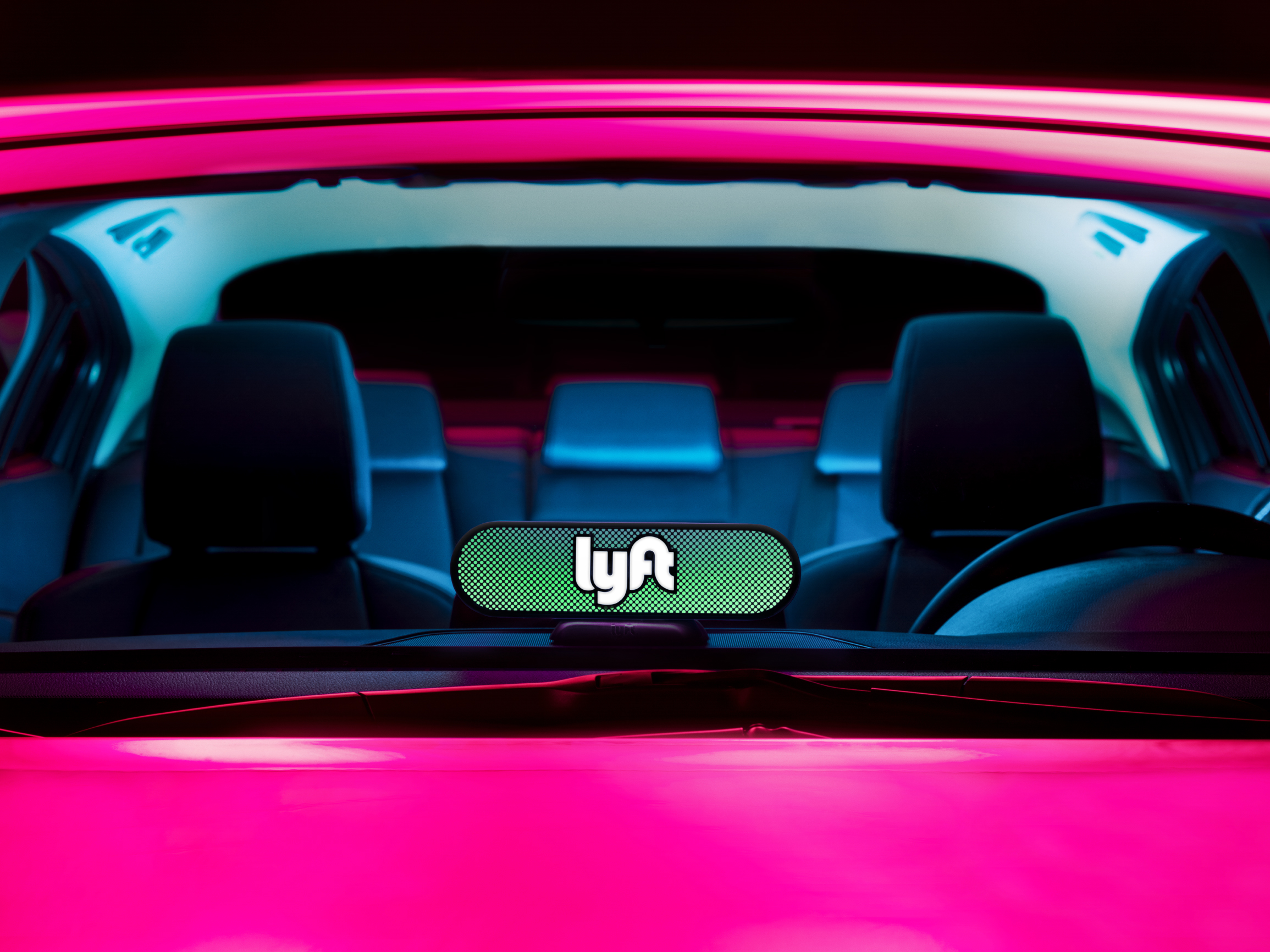
Lyft will be phasing out the pink mustache that has long been the ride app company’s symbol and going in what executives describe as a more “modern, sophisticated” direction that could foreshadow the company’s approach to the self-driving car experience.
These days, a passenger can often identify a Lyft ride by a pink “glowstache” or mustache-laden sticker stuck on a driver’s windshield. On Tuesday, the company announced that those identifiers will be replaced by a much flashier LED lighting device meant to sit on drivers’ dashboards. Though using the device will the optional—given that Lyft treats drivers as contractors and therefore cannot legally manage the details of how they do their jobs—the startup plans to ship a device to any driver who wants one, at no cost to them.
Called Amp, the device’s purpose is three-fold as of the launch, though executives said the company might add functions down the line. On the front is a multi-color LED lighting display that is designed to help passengers quickly connect with the correct driver on the ground. On the back is a display of running text that passengers can see once inside the car, adding a way for Lyft to communicate messages to riders. And assuming drivers embrace Amp, the beacons may also serve as thousands of bright little mobile billboards for the company in cities around the country.
“We are excited to see a bunch of cars driving around with Lyft front and center on the vehicle,” said Tali Rapaport, a VP of product, emphasizing that in addition to practical functions, the lighting devices are meant to help keep “Lyft top of mind in the markets where it is.” Rapaport said that the company plans to first ship the devices to drivers in San Francisco, Las Vegas, Los Angeles and New York with the goal of having their dashboards “lit up” by New Year’s. The rest of the company’s roughly 200 markets in the U.S. will follow.

The Amp display, made up of 160 LED lights, can signal in six colors, and the rider will be notified in the app that they’re looking for, say, a teal or green display. Lyft hopes this will lessen confusion at busy pickup spots and add a layer of reassurance for riders. (Ride app companies have encountered problems with people posing as fake drivers; many rides currently start with the driver and rider name-checking each other to make sure they’re both in the right place.) Eventually the app will allow riders to flash the same color on their screens, so the parties can signal each other like blind daters who both bring roses to a restaurant.
The company would not comment on the cost of developing the product—which has been in the works for several months—or providing it free of charge to the more than 300,000 drivers on the platform. When asked how the company will measure the return on the investment, Rapaport said that “every second saved” for riders and drivers helps justify the expense, as does an increase in ridership that might be tied to the campaign.
Uber, Lyft’s chief rival, recently announced the first big update to the company’s rider app in four years. And it was clear that the leader in the space is focusing their investment in algorithms, trying to improve their user experience by predicting where riders want to go and even the minute they will arrive.
Though splurging on hardware that serves simple functions might seem at odds with a tech industry obsessed with intangibles like advanced machine learning, it’s also easy to see how this could be early field-testing for the “interior experience” Lyft is working on in the driverless space. In the company’s partnership with GM and Cruise, Lyft is focused not on building cars nor sensors but on user-experience problems like how to connect users with self-driving cars, how to personalize the ride and how to convey to riders what the car is thinking and doing. The driver — at least for now — won’t have control over the text.
The text running across the back of the Amp device will at first be limited to things like personalized greetings (“Hello, Barbara”), superficial holiday wishes or hoorahs for local sports teams, Rapaport said. But one can imagine some version of this being the interface that tells the rider whatever the car is thinking in the future and the light signaling serving as the method for connecting rider and machine. Though she did not comment on specifics, Rapaport confirmed that they do see Amp as “extensible” to driverless projects.
Though the mustache appears to be going the way of the fist bump—once a key, if silly, part of the experience that has gone by the wayside as the startup has grown into a bigger company—Lyft is retaining some juvenile spirit. Along with the Amp announcement, the company is releasing new TV ads with the slogan “Ride on the Bright Side.” The ads paint Lyft as the kind alternative to the dark and callous Ride Corp, a thinly veiled alter ego of Uber where white men spend their time plotting and laughing maniacally in board rooms.
“Still having that wink in there,” said Ricardo Viramontes, Lyft’s creative director, “is vitally important to us.”
More Must-Reads from TIME
- Donald Trump Is TIME's 2024 Person of the Year
- Why We Chose Trump as Person of the Year
- Is Intermittent Fasting Good or Bad for You?
- The 100 Must-Read Books of 2024
- The 20 Best Christmas TV Episodes
- Column: If Optimism Feels Ridiculous Now, Try Hope
- The Future of Climate Action Is Trade Policy
- Merle Bombardieri Is Helping People Make the Baby Decision
Contact us at letters@time.com